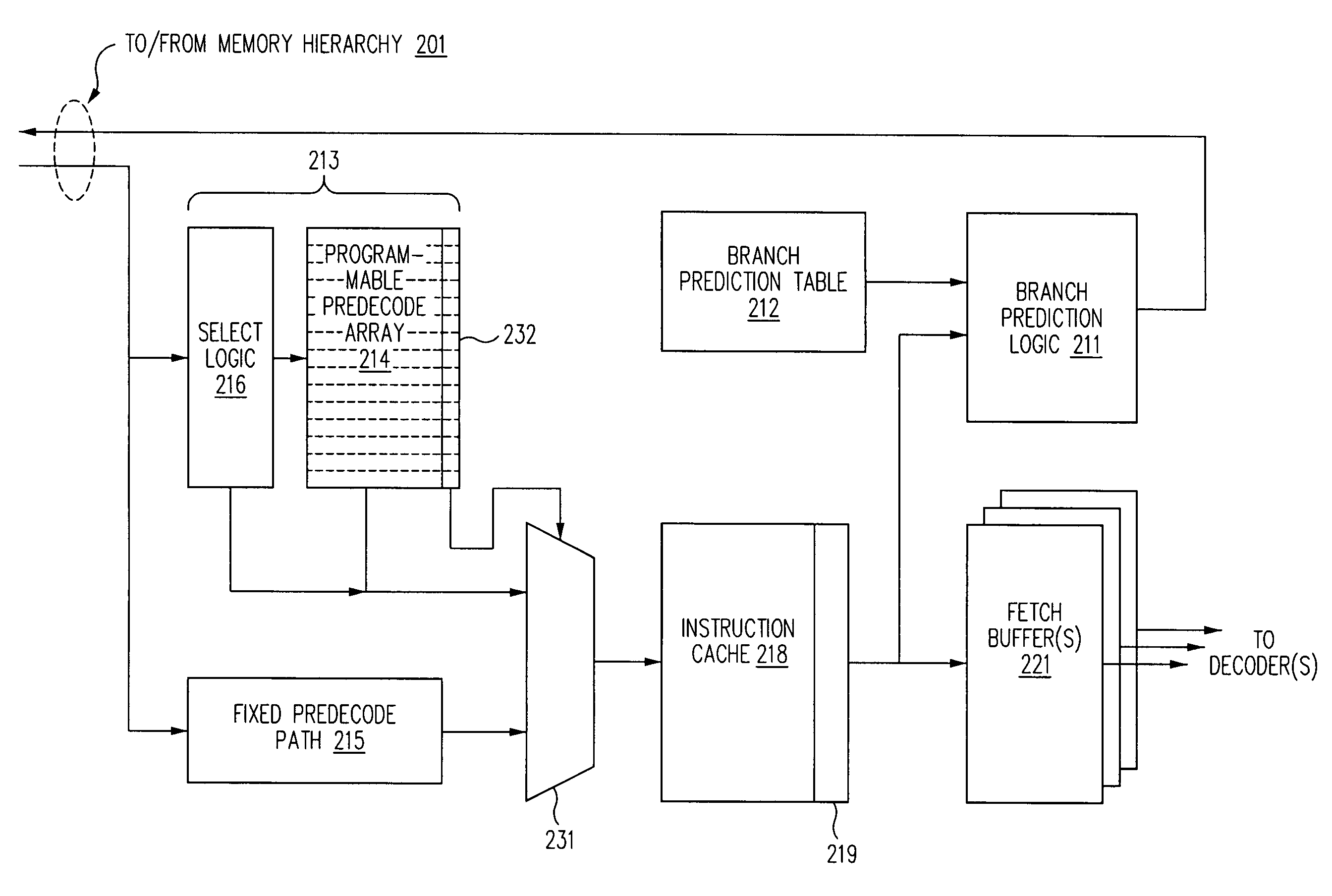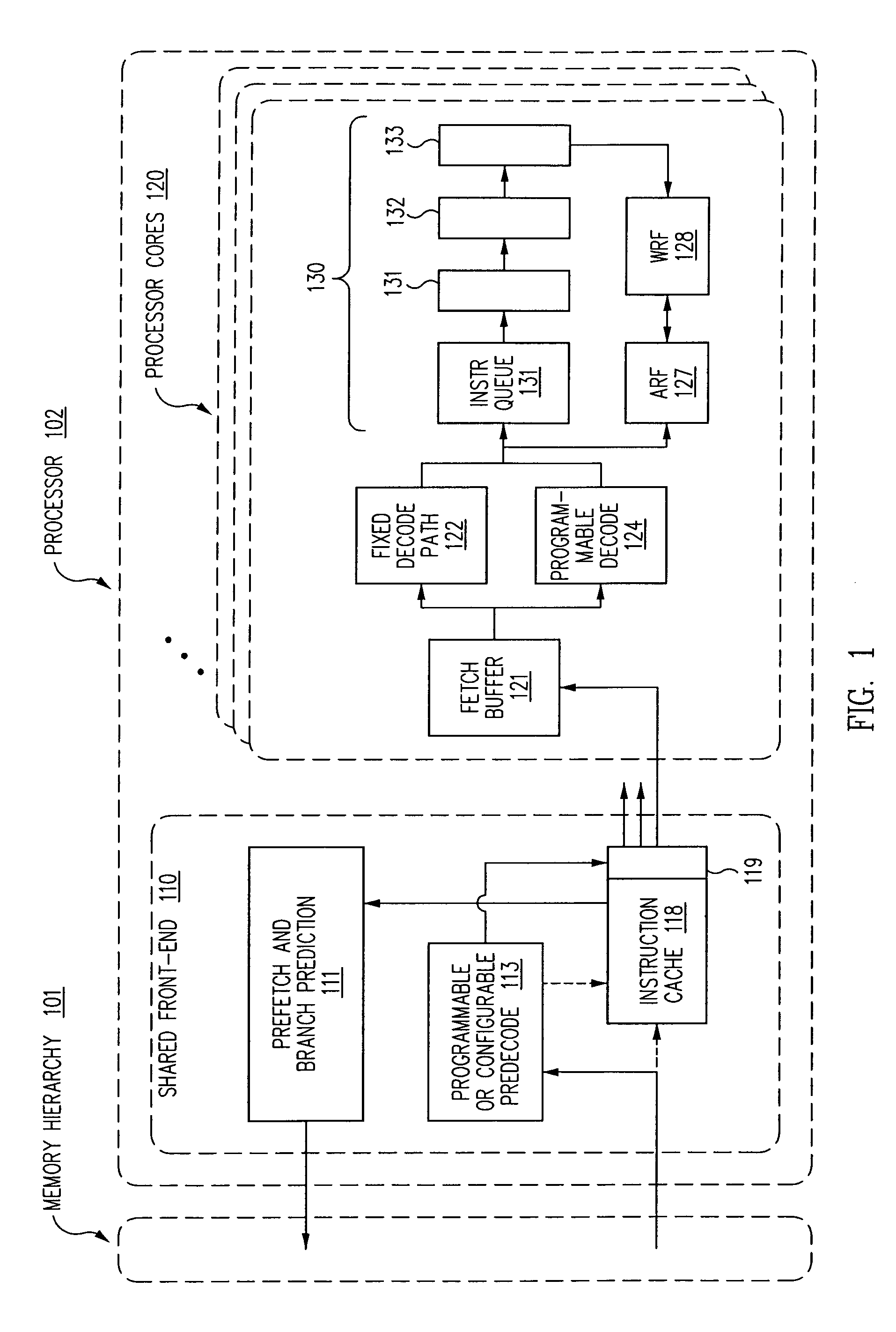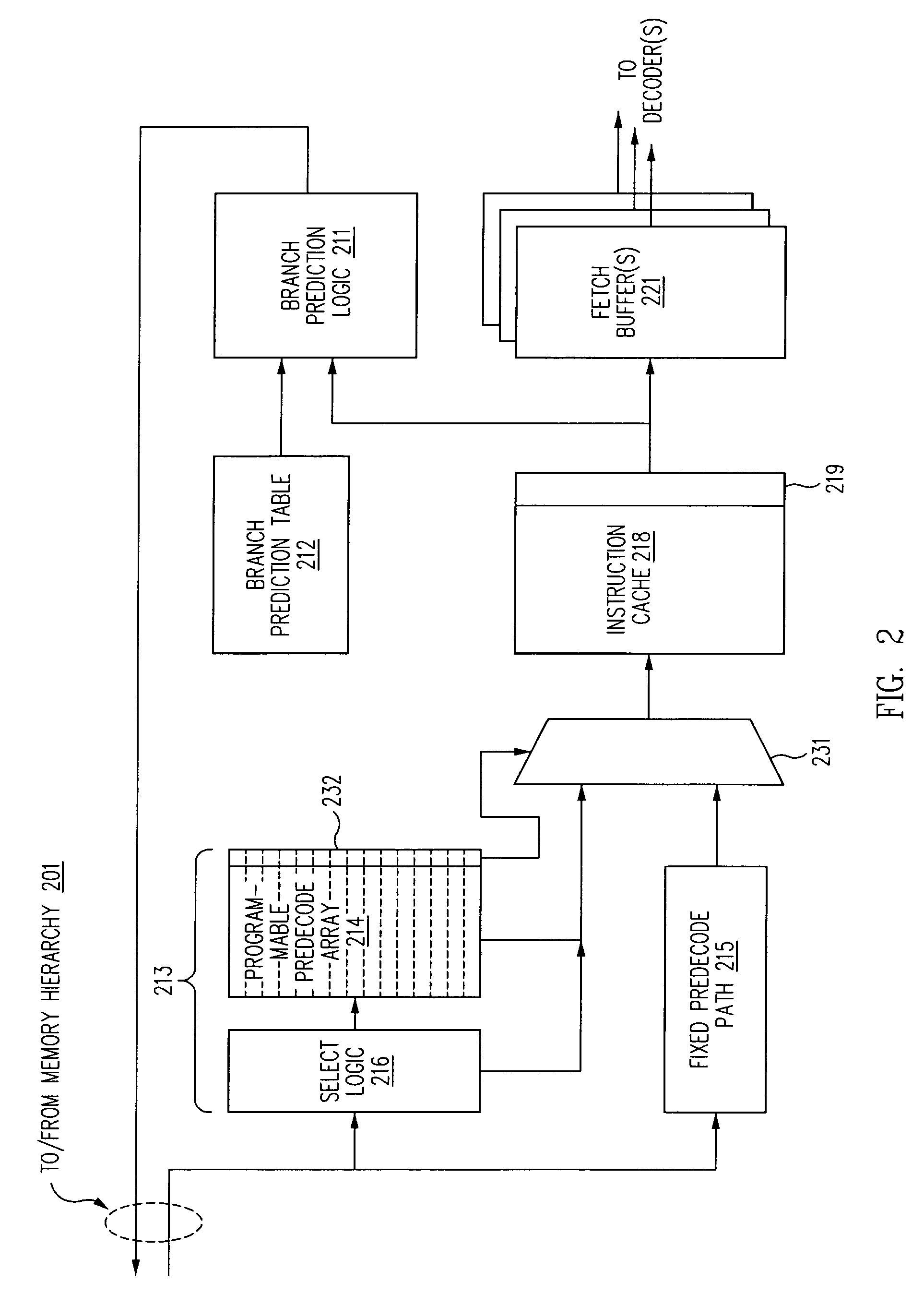Patchable and/or programmable pre-decode
a pre-decoding and programming technology, applied in the field of computation systems, to achieve the effect of reducing the risk of concurrency or speculation, sequencing and execution, and reducing the risk of timing
- Summary
- Abstract
- Description
- Claims
- Application Information
AI Technical Summary
Benefits of technology
Problems solved by technology
Method used
Image
Examples
Embodiment Construction
)
[0022]The description that follows illustrates certain exemplary realizations of processor architectures in accordance with the present invention. In an effort to provide persons of ordinary skill in the art with a clear description of the invented concepts, we have illustrated these concepts using processor architectures of specific design. In particular, in at least some of our descriptive material, we refer to processor designs that incorporate multi-core designs and / or multiple execution units that may include architectural facilities (including fetch buffers, decode paths, helper arrays, instruction queues, register files, functional units and execution pipelines) replicated on a per-core and / or per-execution pipe basis. In addition, some of our descriptive material is consistent with a particular highly-speculative, highly-pipelined, in-order, multi-core processor design in which extremely large numbers of instructions may be “in flight” at any given time.
[0023]In some cases,...
PUM
 Login to View More
Login to View More Abstract
Description
Claims
Application Information
 Login to View More
Login to View More - R&D
- Intellectual Property
- Life Sciences
- Materials
- Tech Scout
- Unparalleled Data Quality
- Higher Quality Content
- 60% Fewer Hallucinations
Browse by: Latest US Patents, China's latest patents, Technical Efficacy Thesaurus, Application Domain, Technology Topic, Popular Technical Reports.
© 2025 PatSnap. All rights reserved.Legal|Privacy policy|Modern Slavery Act Transparency Statement|Sitemap|About US| Contact US: help@patsnap.com



